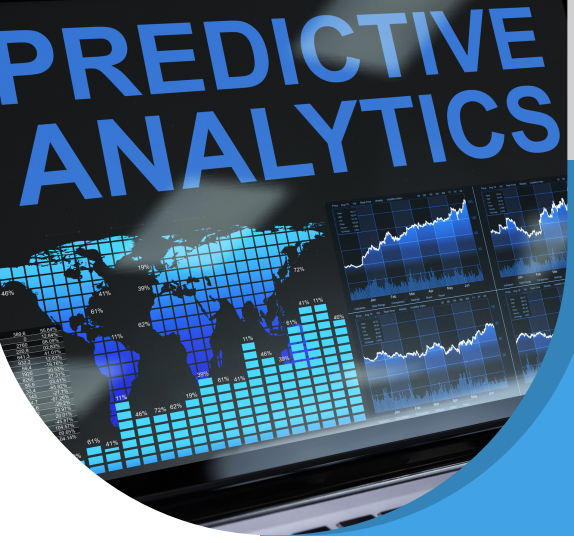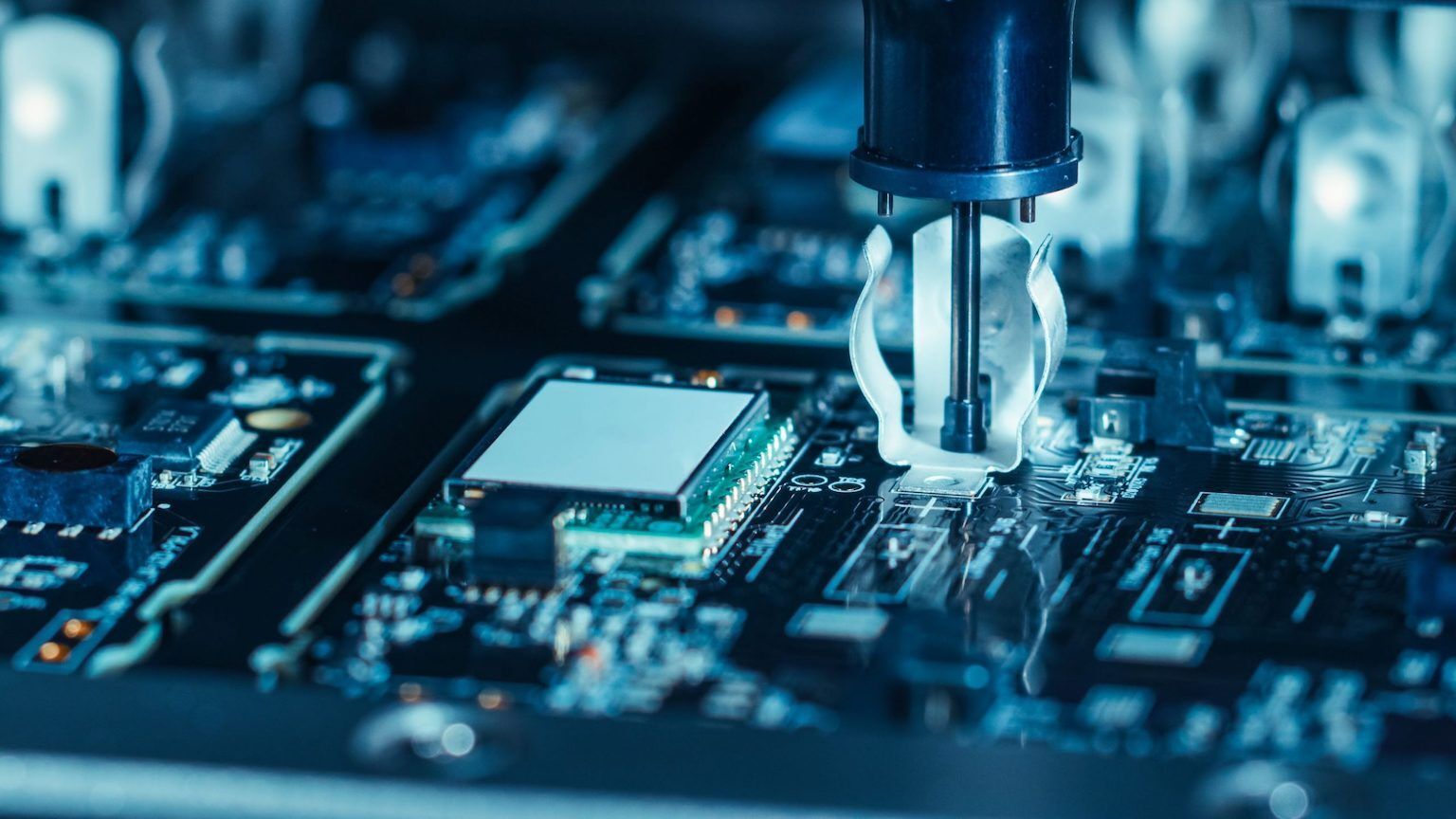Platform & Resourcing Choices For Your Industry 4.0 Business Transformation Journey
INTERNAL RESOURCES, OUT-SOURCED OR HYBRID APPROACHES
ABSTRACT
The promise of the benefits that can be reaped from Industry 4.0 big data and predictive analytics through access to machine and operator data is compelling enough for most manufacturers to seriously direct their IT and OT departments to look into ways to enable such machine and operator data acquisition.
Historically manufacturers have been focused on yield (quality) improvements only. However, this is just one third of the equation, since equipment availability and performance also directly affect revenue and margin. Being able to optimize overall equipment effectiveness or OEE in terms of equipment availability, performance and the quality of items produced by the equipment is the Holy Grail for manufacturers to improve their bottom lines.
A fully integrated solution requires other aspects of the manufacturing OT and IT infrastructure to be addressed as well. Depending on the scope, GEMBO is able to leverage its partner ecosystem, consisting of Yield Improving Software Vendors, Manufacturing Execution System Vendors and Backend Infrastructure Vendors, to augment their solutions in order to be able to deliver an end-to-end transformational OT/IT solution.
In the quest for big data and predictive analytics the question of rolling a solution in-house vs. outsourcing comes up inevitably. Given the many aspects of a well-designed solution, it is instructive to look at the pros and cons of in-house vs. outsourced.
BENEFITS PERCEPTION OF INDUSTRY 4.0
Rather than focusing on a laundry list of items to consider pros and cons for, it is more useful to boil this list down to the following six KPIs to measure and compare both approaches by:
- Flexibility: The ability to add-on new features or to modify existing features.
- Resources: The effectiveness and availability of human resources.
- Speed: The ability to meet project timeline goals.
- Know-How & future-proofing: The Domain expertise to ensure project success.
- Cost: The cost of human resources and cost impact on other projects.
- Ongoing Support: The resources needed to ensure post-project success.
The following presents an analysis on how each KPI may play out in both cases.
| KPI | In-House | Out-Sourced |
|---|---|---|
| Flexibility | Maximum control over resources, but impacted by effectiveness and availability of resources as well as cost in case of new skill sets and expertise and if resources must be shifted between projects. | Varies depending on the Ts & Cs agreed upon for ongoing technical support, whereas new add-ons and modifications are fulfilled through ramp up and ramp down of resources without impact to other projects. |
| Resources | Resources are almost always in short supply and may not have the range of expertise required to deal with specific project areas and dynamically shifting resources between projects almost always meets with significant resistance. | Projects are usually resourced with the right number of people, skill sets and expertise to deal with the full scope of the project and dynamically shifting resources between projects is restricted by contractual obligations to meet project goals. |
| Speed | Speed is directly impacted by resource effectiveness and availability, and therefore project timeline goals are directly impacted by resource limitations. | Projects are usually resourced with the right number of people, skill sets and expertise to deal with the full scope of the project and therefore impact on project timelines is minimal. |
| Know-how & future-proofing | Resources are usually behind on state-of-the-art due to a lack of project-specific specialization, which not only negatively impacts the implementation, but also risks that the solution will quickly become outdated. | Specialization is paired with know-how on the latest technologies, which enables efficient implementations and helps with future-proofing the solution, avoiding future costs of having to redo parts or the whole solution. |
| Cost | Cost of resources will increase if people with new skills and expertise have to be hired, and/or in case other projects are impacted by shifting resources. | Human resources are temporarily assigned and reduced as the project winds down to a minimum as required for ongoing technical support. |
| Ongoing support | Ongoing support is at risk since employee turnover can leave significant gaps in skill sets required to fix bugs, implement enhancements and/or add features. | Ongoing support is customarily part of the agreement, securing the resources necessary for bug fixes, enhancements and/or feature additions. |
Practical use of this table consists of assigning a ranking for each case for each KPI and computing the total. Among these KPIs perhaps the one that stands out the most is for the know-how and future-proofing of the solution. For example, the IPC – Association Connecting Electronics Industries® recently created the Connected Factory Exchange or IPC-CFX standardized data exchange protocol as an enabler of Industry 4.0, Smart Factory and Digital Factory solutions. Awareness and understanding of IPC-CFX is likely not the focus of in-house IT staff, but certainly within the scope of GEMBO and its partner Aegis Software.
In our experience the ranking of the above KPIs may change a lot between the first project and subsequent ones. Usually the first project is the one with the highest risk and least chances to succeed if done entirely in-house. Therefore, the ideal approach may be a hybrid one, in which a joint team is formed, consisting of internal personnel and expert external resources, and where the first project heavily relies on the expertise, skill sets and full presence of the external experts, while for subsequent projects the internal resources take on a larger role.
GEMBO and its partners are able to deliver end-to-end Industry 4.0 smart factory solutions to manufacturers, spanning the full scope from machine and human operator data acquisition to OEE KPIs, predictive maintenance, as well as comprehensive MES functionality. Through our combined resources, skill sets and expertise in implementing and rolling out Industry 4.0 smart manufacturing solutions we are able to score consistently very high against each KPI in the above table.
CONCLUSIONS
Internal resources are usually behind on state-of-the-art due to a lack of project-specific specialization, which not only negatively impacts the implementation, but also risks that the solution will quickly become outdated. On the other hand, an outside entity can bring the required levels of specialization paired with know-how on the latest technologies, which enables efficient implementations and helps with future-proofing the solution, avoiding future costs of having to redo parts or the whole solution. Deep specialization of GEMBO in digital twin connectivity and predictive analytics combined with Aegis Software’s expertise in MES and the IPC-CFX standardized data exchange protocol assures future-proofed end-to-end smart manufacturing implementations and deployments.

GEMBO ( www.gembo.co ) has a SaaS Industrial IOT Platform which provides enterprises and users with mission critical data, insights and decision making tools enabling cost reduction and revenue growth through optimization via the use of IoT, Artificial Intelligence and Machine Learning. Farm Operator Intro A large-scale solar farm operator, managing a 50 MW solar farm with significant investments in infrastructure. The solar farm has a current efficiency of 24% and a target of increasing this efficiency over time. The farm operates in an area where electricity prices are approximately $32 per MWh, and it has a large operational budget dedicated to maintaining its equipment. GEM has deployed the Precare cloud, predictive maintenance and solar power prediction Package, on the customers Data, extracted from the solar farm's SCADA system. Problem Due to the complexity of solar equipment and environmental factors, the customer has faced a gradual decline in efficiency, dropping from 26% to 24% over the past few years. As a result, the farm's revenue has been impacted by lower power output, and operational expenses have been steadily increasing. Furthermore, the lack of predictive maintenance (PdM) has led to frequent downtime and unplanned maintenance, further increasing the inefficiencies. The farm owner reached out for a solution that could improve operational efficiency, reduce costs, and enhance overall power production by using predictive analytics to forecast and mitigate potential issues before they occur. Solution After evaluating the farm’s needs and existing system, GEM’s Predictive Maintenance (PdM) and Solar Power Prediction packages were discussed and found as the right fit. This solution was implemented through GEM’s Precare analytics platform, which helps monitor and predict performance, detect faults early, and optimize maintenance schedules. The key components of GEM’s solution included: Real-time Monitoring: Continuous monitoring of solar inverters, panels, and environmental conditions. Predictive Maintenance: Advanced machine learning models to predict the likelihood of system failures and performance degradation. Power Output Forecasting: Predictive analytics to model expected energy production based on historical data and real-time inputs, leading to more accurate forecasting and optimizing grid management. Results After deploying GEM’s predictive maintenance and power optimization system, GEM provided the customer a calculation of a 3 year business analysis Financial Benefits: Revenue Increase: The system’s efficiency would increase by an additional $864,320 in revenue over 3 years due to the increased power output from the higher efficiency (25% vs. 24%). OPEX Reduction: Predictive maintenance would reduce the monthly operational expenses by 3%, leading to OPEX savings of $78,810 over the 3-year period. Net Benefits: The customer will realize a total net benefit of $758,130 after deducting the initial system cost and subscription fees. ROI: The ROI of 658.13% was computed from the net benefits of $758,130 after accounting for system cost investments.

SELF SERVICE DATA STUDIO CASE STUDY This case study showcases GEMBO, a leader in SaaS Industrial IoT Platforms, enhancing a global manufacturer's operations by deploying its Precare Data Studio BI product across 70 machines. The solution, focused on self-service data management and analytics, resulted in significant manpower savings, improved self-service efficiency, and automated analytics distribution. Unique to GEMBO Precare is its ability to deploy independent sensors, connecting any machine to its cloud, thereby offering predictive maintenance and operational insights without substantial capital expenditure, distinguishing it from other market solutions.

GEMBO ( www.gembo.co ) is a leading innovator in the world of SaaS Industrial IoT Platforms, with a proven track record of delivering cutting-edge solutions that help customers achieve their business goals. The company's platform uses a combination of IoT, machine learning, and AI to provide customers with real-time insights into their operations, enabling them to make better decisions and optimize their performance. GEMBO is committed to continuous innovation, and the company is constantly looking for new ways to use technology to help its customers succeed. Customer Intro The customer is a multi $B Tier one manufacturer, with multiple factories around the globe. Manufacturing lines vary between electronic manufacturing to semiconductor, serving a variety of markets including Automotive, Networking, Industrial, Audio and Gaming. GEM has deployed Precare Cloud , Precare Edge , OEE Availability and predictive analytics Package . Its footprint grew from a few machines to over 90 machines in a few of their factories. Problem The customer has been utilizing OEE Availability analytics to identify machines with low availability and assigning them to responsible technicians. The customer's management team has been overwhelmed with emails from technicians providing status updates on the machines after they have taken corrective actions. The customer intends to streamline the process of monitoring machine status from the receipt of OEE Availability status to the resolution of availability issues, enabling the machines to operate efficiently based on established availability KPIs. The customer has provided the following workflow to illustrate their requirements.

GEMBO ( www.gembo.co ) is a leading innovator in the world of SaaS Industrial IoT Platforms, with a proven track record of delivering cutting-edge solutions that help customers achieve their business goals. The company's platform uses a combination of IoT, machine learning, and AI to provide customers with real-time insights into their operations, enabling them to make better decisions and optimize their performance. GEMBO is committed to continuous innovation, and the company is constantly looking for new ways to use technology to help its customers succeed. Customer Intro The customer is a Tier 1 multi-billion dollar global manufacturing leader in the power, discrete semiconductor, and passive electronic components (PES) space. GEMBO has deployed a suite of innovative, cloud-based solutions to the customer, including Precare Cloud, Precare Edge, OEE Availability, Performance, and Quality packages. These solutions have been deployed to 70 machines across two factory floors, and the customer intends to scale the deployment across their entire Asia-Pacific footprint. Problem The customer's equipment engineering team has been managing the productivity of their machines through manual Excel reports. These reports are prepared by machine operators, checked and consolidated by supervisors, and then reported to management by factory floor managers. The customer needs to minimize or eliminate these manual reports to improve the accuracy of the reports and save on manpower costs. The following are examples of manual reports that the customer needs to eliminate: 1. Calculation of the share of subcategories of Performance and Quality 2. Calculation of the percentage of Planned Downtime to Total Run Time 3. Graphical presentation of OEE Availability with Time Frame These reports are time-consuming and error-prone. They also require a significant amount of manpower to create and maintain. By eliminating these manual reports, the customer can improve the accuracy of their productivity data and save on manpower costs. Solution After a technical discussion with the customer, GEM integrated the manual Excel reports into the OEE analytics framework. The team then implemented the following process: Define the customer requirements Gather the excel reports Create an output image showing changes in the analytics Define data to be collected Collect data from the customers Collect the data from customer Validate the completeness of the data based on the requirements Collect missing data Confirm with customer if all data are accurate and structured properly based on their requirements Prepare the design Overview Customer Requirements Use Case System Diagram Code Diagram Review and approval of the design Testing on Developer Environment Deployment to Production Customer acceptance Results The migration of previously manually prepared OEE reports to a digital format using OEE Analytics resulted in the following benefits: 100% savings on manpower costs, as the reports are now generated automatically and do not require manual input. 100% accuracy, as the data is collected directly from the machines and is not subject to human error. 100% time savings for management, as they no longer need to spend time reviewing and validating the reports. Improved decision-making, as the Operations Group can now access real-time data and insights to make better decisions. Increased efficiency, as the Operations Group can now focus on core tasks and not on data entry and reporting. Conclusions GEMBO Precare has a set of powerful data acquisition, analytics, predictive and OEE tools for manufacturing equipment. GEMBO Precare compiles critical KPIs that can be used to easily trace back which machine or machine subsystem is responsible for a low KPI score. GEMBO Precare is also able to make predictions at equal or better than humanly possible for machine maintenance to be scheduled before a failure occurs. But most importantly, unlike other market solutions, GEMBO Precare is able to deploy its own sensors independently from any machine controller and fully connect any machine data island to the GEMBO Precare Cloud at a fraction of the cost of a new machine; hence, saving manufacturers from having to make large and risky CAPEX and OPEX investments for new machines. Contact Us Visit us at www.gembo.co or contact us via email at sales@gembo.co






